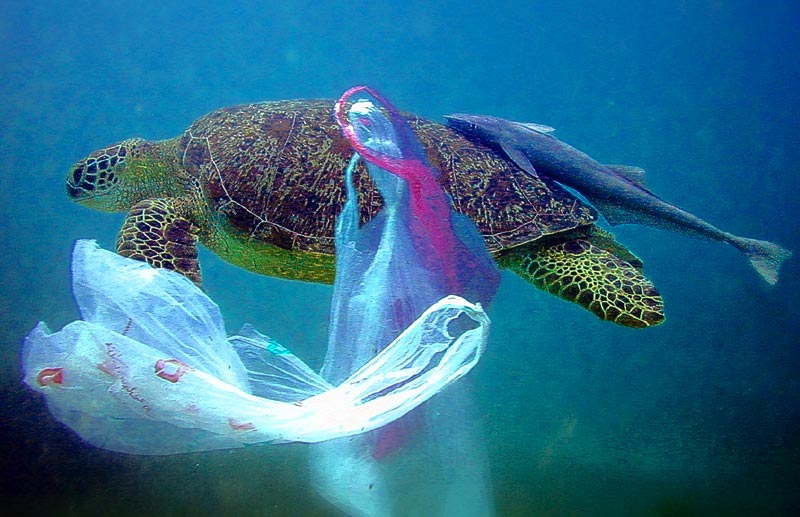A problem of pollution: A danger to animals
Sea turtle entangled in debris.
January 26, 2022
Different organisms live in many varieties of ecosystems, where the smallest patch of land may be crucial to any type of animal. From a pond to a lake to the sea, many creatures live in discrepant places. Certain species depend on either a particular plant, insect, or any other living being.
Though, with the growing of man-made destructive forces pushing through, these animals are left to suffer, with little to no help. Humans decide to throw their wastes into the air, water, and soil.
In the last 80 years the chemical output has increased by 500-fold, contaminating entire landscapes in the process while still accumulating in the bodies of plants and animals. Most of this rubbish comes from human activities from the coastline to all the way inland. Yet, the major origin of pollution is nonpoint source pollution, which occurs as a result of runoff. This type of pollution is made up of diverse sources such as septic tanks, vehicles, farms, livestock ranches, and timber harvest areas.
While in seas and oceans the destruction happening to marine life cannot be ignored. Due to all the debris and garbage thrown and washed into rivers, they find their way towards the ocean where they may end up on the coast of beaches by tides and waves, or they could possibly sink into the ocean, where animals could mistake the trash for food.
One major problem of pollution that is continuously persistent is marine debris, which reaches throughout the world around oceans and Great lakes. Ranging from 5mm microplastics to fishing gear and abandoned vessels. Hundreds of species have negative impacts that can kill or harm the animal when either ingested or if they become strangled in between the trash. This debris may also affect the ecosystem an animal is dependent upon.
“Most of the focus on plastic pollution to date has centered on the marine environment. But we know that plastics are found in terrestrial and freshwater environments,” said Amy Fraenkel, Executive Secretary of the Convention on the Conservation of Migratory Species of Wild Animals.
Air pollution is another problem that is hazardous towards organisms, causing respiratory problems such as asthma. But not only that, pollutants being released in the air also causes cancer, and develop heart diseases and even brain damage, which could lead to neurological disorders. Even worse for wild animals due to not having quick access to healthcare.


